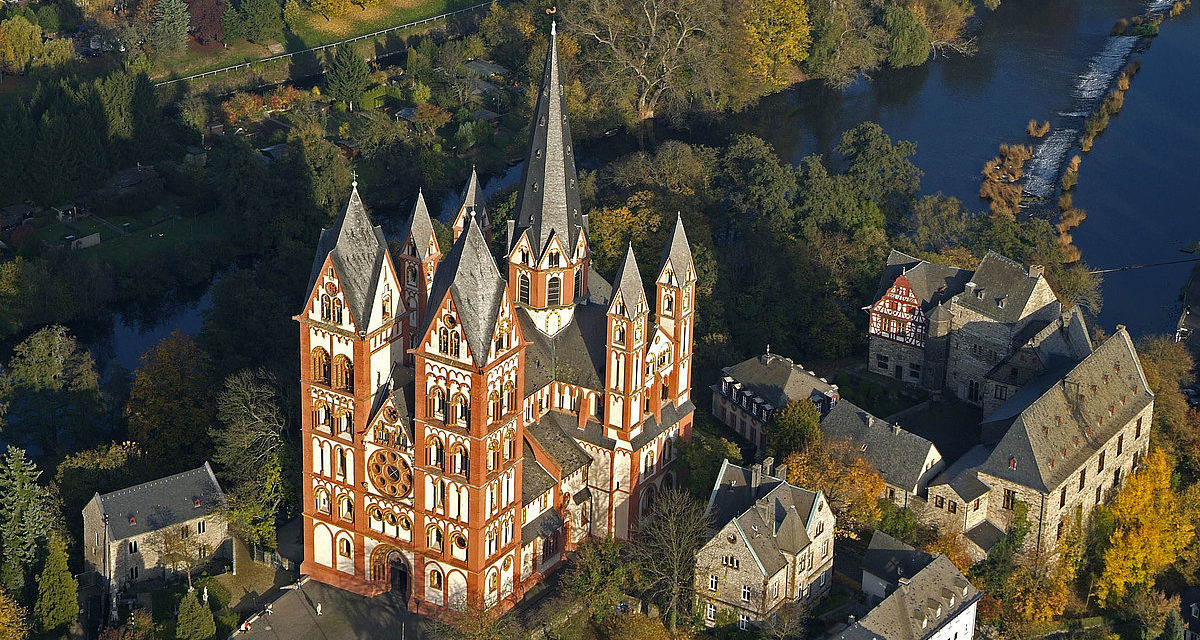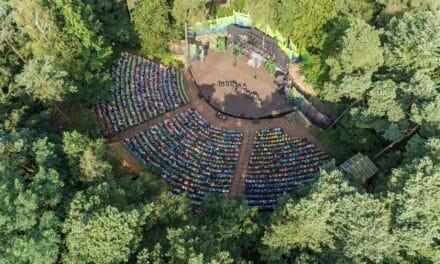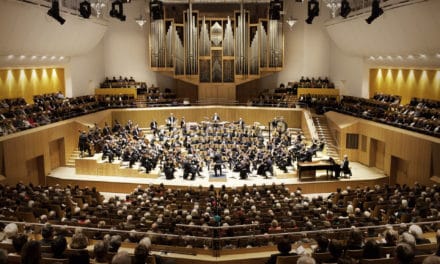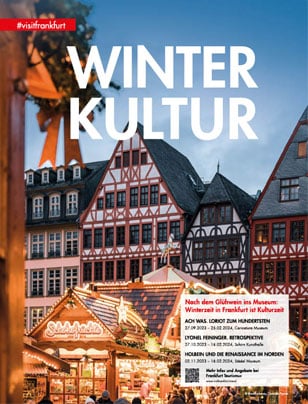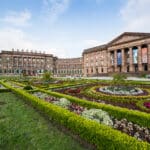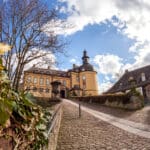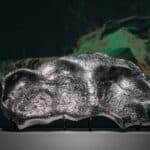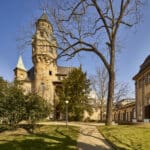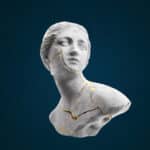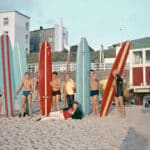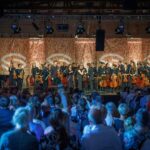The location of Limburg Cathedral is outstanding: on the rock above the Lahn, visible from afar. Limburg has always been located on an important traffic route. That is why the cathedral is a familiar sight for many people. Even though huge bridges allow car and train travelers to almost look down on the cathedral from above, the sight remains majestic. And in the past? When the road still led along the Lahn, the rock and cathedral that travelers looked up to must have looked like a single entity: like a rock dome.
Limburg Cathedral was consecrated in 1235. Its architecture reflects the dynamism of the time. It combines elements of the previously predominant Rhenish Romanesque style and the more versatile and technically sophisticated Gothic style that was gaining ground from France. The massive, fortified construction is Romanesque, while the high and light-flooded interior is Gothic.
The late medieval sacred architecture is rich in symbols. It is no coincidence that the cathedral has seven towers. Seven is the number of sacraments. Seven is the sum of three and four, the three divine and four worldly virtues. Multiplying three and four gives twelve, the number of the apostles and the tribes of Israel.
Inside, the cathedral symbolizes the Heavenly Jerusalem. The nave is arranged like the street of a city - Jerusalem - while the side aisle and gallery form the multi-storey houses with their entrances and windows. The paintings on the walls tell biblical stories. Finally, the floor plan of the church depicts the cross, with the altar in the center, the crossing.
Limburg Cathedral, consecrated in 1235, was planned and built by people of the late Middle Ages, for their contemporaries. At a time when reading and writing were skills mastered by few, images helped to illustrate the messages of the Holy Scriptures. The walls and ceilings of the cathedral are decorated with colorful and meaningful images. Although the centuries have caused the colors to fade and renovations have negligently or accidentally damaged many of them, the 21st century viewer can still see the wealth of medieval expressiveness and piety.
The arches of the nave gallery up to the triforium depict saints, apostles and evangelists and their legends and accounts. The vaulted ceiling tells of the Fall of Man, sin and paradise. In the northern transept, a large mural depicts the line of Jesus' ancestors. In the southern transept there are smaller depictions, such as the handing over of the keys to Peter, on the upper walls a giant Samson uprooting a tree and John the Baptist in a fur cloak.
On the columns and walls of the first floor there are many detailed illustrations, on the left and right in front of the crossing the patron saints George and Nicholas. High above the crossing, symbolizing the gateway to heaven, St. George and St. Nicholas can be seen united with Christ, the judge of the living and the dead.
In the past, the cathedral was often used as a burial place. Many epitaphs (tombs) commemorate canons and donors. The largest and oldest is that of Konrad Kurzbold, the founder and builder of the original church. The tomb base and the six sculptured columns come from the first church, where Kurzbold was buried after his death in 948. The tomb slab was replaced when the tomb was placed in the new church in 1235. It shows the founder life-size in Staufer costume.
Just as old as the cathedral is the magnificent baptismal font, which is still used today to welcome a new member into the church. Originally placed in the south transept, it now has its prominent place in the Erasmus Chapel in the south aisle.
The 9.30 meter high sacrament house from 1496 is attached to a pillar in the nave. In the apse to the east of the crossing, the choir stalls separate the choir area from the outer ambulatory. Until the 19th century, the stalls separated the altar area from the transepts. Now the altar area is open on all sides.
The altar at which mass is celebrated today dates back to 1977. Following the reforms of the Second Vatican Council, the priest celebrates facing the faithful. The 15th century altar cross is located between the crossing and choir.
Up to 28 altars once adorned the cathedral. They were located both on the first floor and in the gallery. As the upper floor can be accessed from all sides and is connected to the first floor via five staircases, the cathedral was also used as a processional church.

